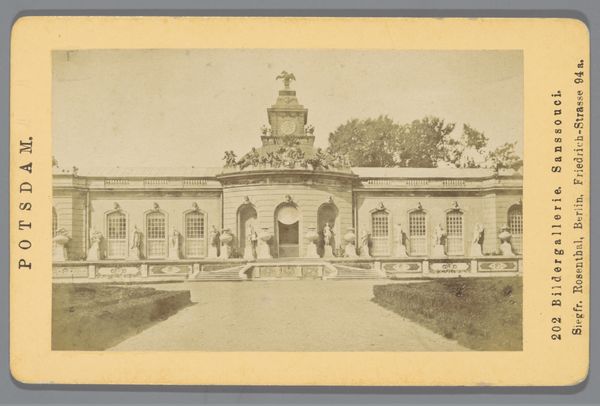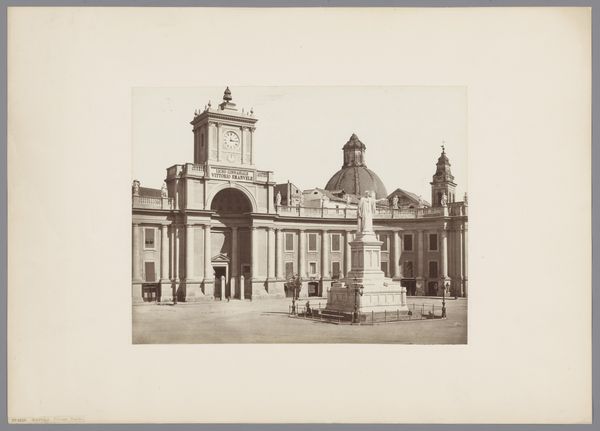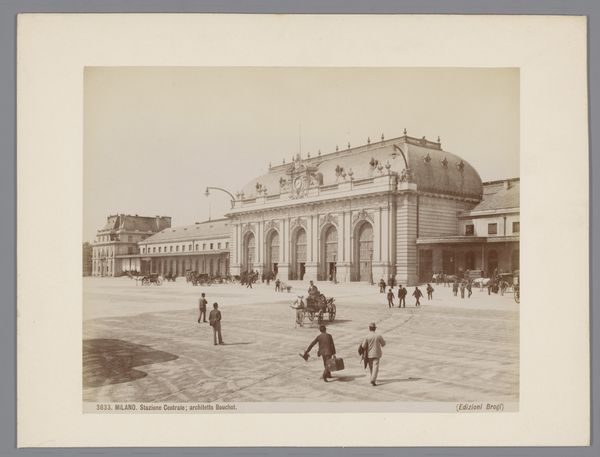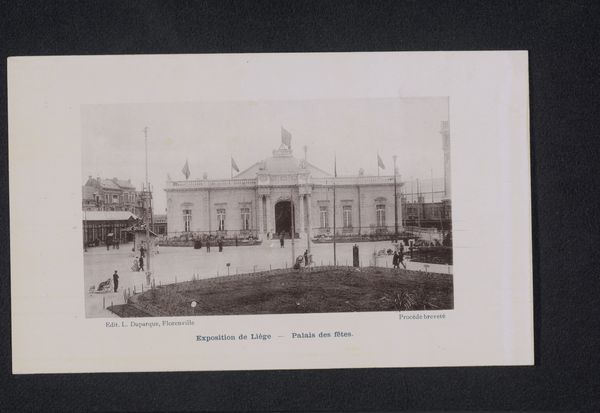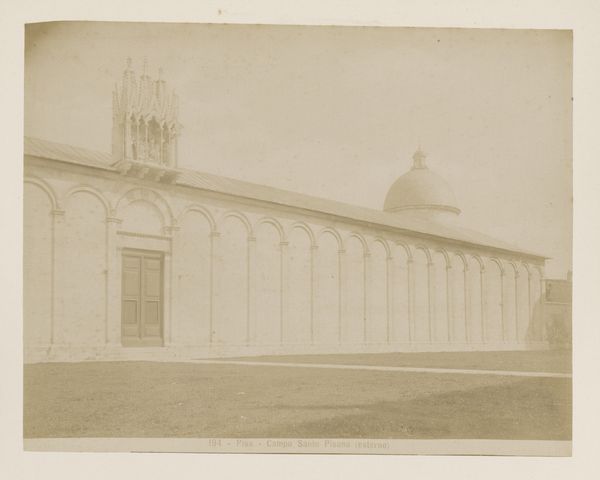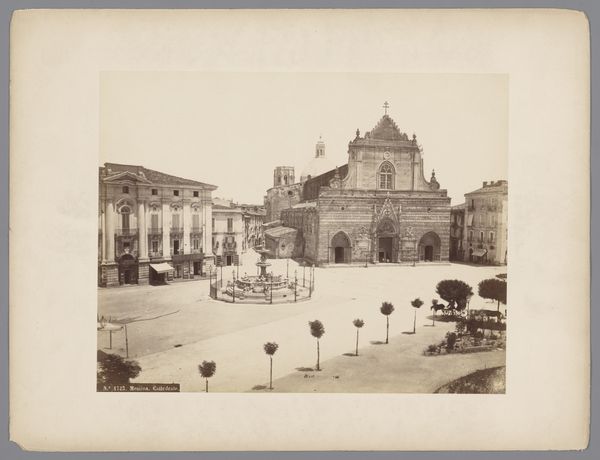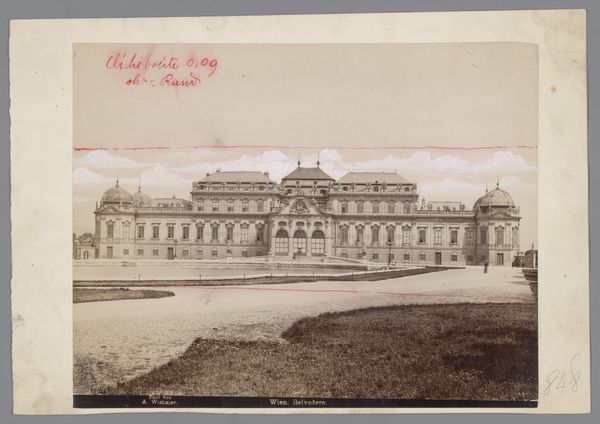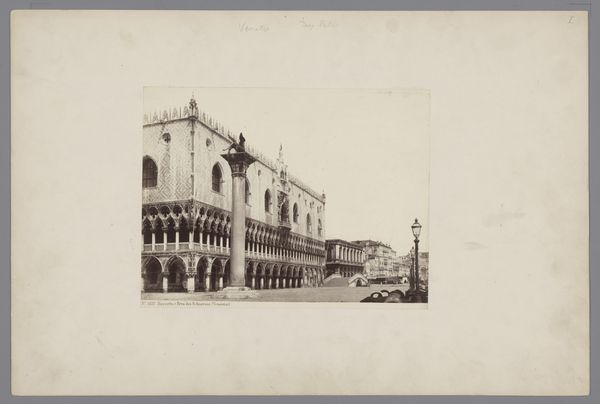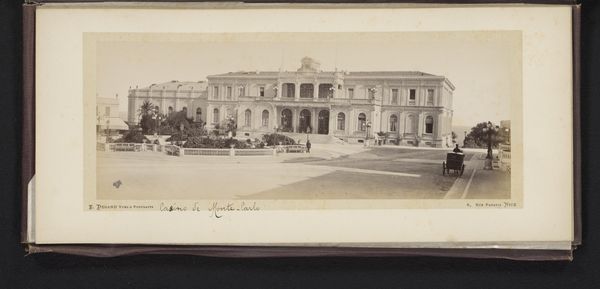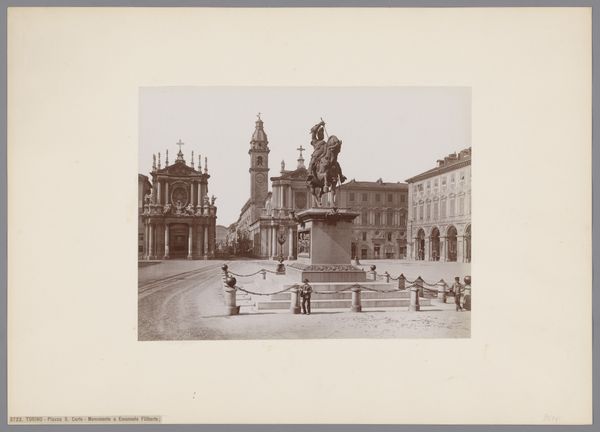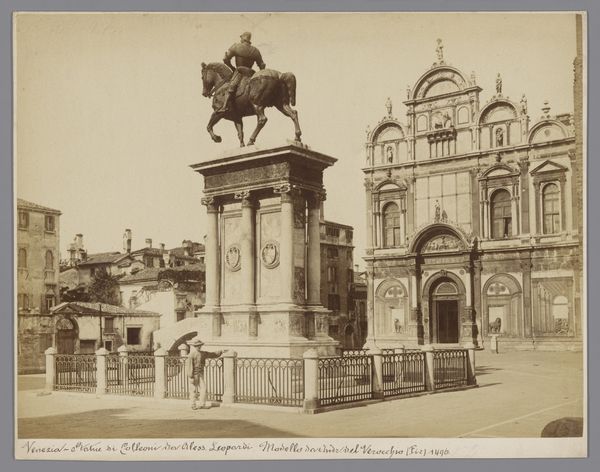
Veduta generale del. famedio, Cimitero Monumentale, Milaan, Italië c. 1860 - 1890
0:00
0:00
Dimensions: height 252 mm, width 198 mm, height 330 mm, width 510 mm
Copyright: Rijks Museum: Open Domain
Editor: This gelatin silver print, "Veduta generale del famedio, Cimitero Monumentale, Milaan, Italië," taken sometime between 1860 and 1890 by Edizione Brogi, feels incredibly still. The composition is dominated by this vast, almost empty plaza leading up to the monument. What stands out to you? Curator: This photograph resonates deeply when viewed through a lens of social history and power. The grand Neoclassical architecture speaks volumes about the 19th-century societal obsession with order, control, and permanence, especially when positioned within the context of death. Consider the deliberate staging of the figures; they are dwarfed by the monument, emphasizing the power structures inherent in both life and remembrance during that period. How do you think the artistic choices reflect the social dynamics? Editor: I hadn’t considered the staging so directly. I was thinking about the geometry and how the light is even, creating a somber, contemplative mood. Curator: Indeed. Now, let's consider the cultural significance of cemeteries in the 19th century. They weren't merely burial grounds but carefully designed spaces that mirrored societal hierarchies, class divisions, and beliefs about the afterlife. What does that say to you, in relationship to current attitudes towards death and commemoration? Editor: It makes me think about how much more public mourning used to be. Now death is very much privatized. This image is so open, so on display. Curator: Precisely. The openness might be a challenge to the privacy that surrounds death nowadays. And the monumentality asks questions about collective memory. It causes one to reflect on issues related to commemoration, historical narratives, and collective identity. Editor: This has definitely reshaped my view; it’s less about quiet contemplation and more about understanding a specific moment and set of beliefs. Curator: Absolutely. Art offers us a window into the past, revealing intricate details of how people lived, governed, and understood their world, while also inviting us to question those same paradigms in the present.
Comments
No comments
Be the first to comment and join the conversation on the ultimate creative platform.
